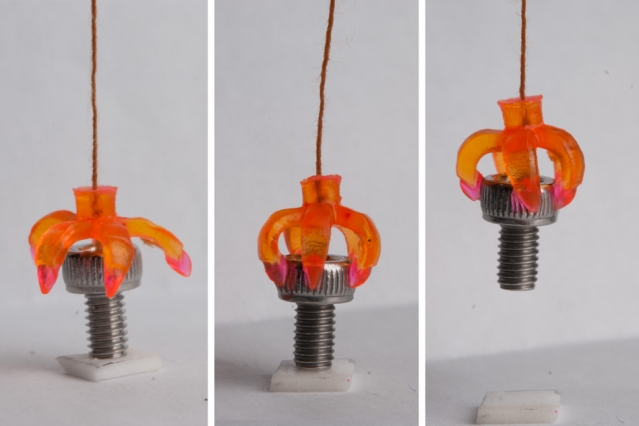Shape Memory Material Printing Advances

Latest News
September 13, 2016
Imagine an implantable device that can deliver the correct dose of a medication as soon as your body shows signs of a fever. Shape memory materials that respond to temperature could provide that capability, and now researchers at MIT and Singapore University of Technology and Design (SUTD) have used 3D printing to create structures that remember their shape after being deformed.

The technology could be used to create actuators that turn solar panels to the correct angle to the sun, or drug capsules that release medicine at the first sign of an infection.
“We ultimately want to use body temperature as a trigger,” said Nicholas X. Fang, associate professor of mechanical engineering at MIT. “If we can design these polymers properly, we may be able to form a drug delivery device that will only release medicine at the sign of a fever.”
The team published their work in the journal Scientific Reports.
Shape memory polymers can change their shape in response to heat, light and electricity, and have been used in “soft” robotics applications and as a potential basis for artificial muscles and biomedical devices. Traditionally it has been difficult to 3D print these materials with high levels of granularity and detail.
MIT and SUTD turned to microstereolithography, which uses light to print patterns on successive layers of resin. The team used a mixture of two different polymers to create the final material.
The material can snap back to its original printed form at a specific temperature range (between 40 and 180 degrees Celsius). The structures they printed (including a tiny Eiffel tower, flowers and coils) could be stretched to three-times their original length without damage, and then snapped back to their initial size within seconds of being exposed to the proper amount of heat.
Using the technology, Fang and his colleagues printed micron-scale features as small as the diameter of a human hair. Because the structures are able to change over time, the researchers consider the methodology a type of “4D printing.”
“Our method not only enables 4-D printing at the micron-scale, but also suggests recipes to print shape-memory polymers that can be stretched 10 times larger than those printed by commercial 3-D printers,” said Qi Ge, a professor at SUTD. “This will advance 4-D printing into a wide variety of practical applications, including biomedical devices, deployable aerospace structures, and shape-changing photovoltaic solar cells.”
Source: MIT
Subscribe to our FREE magazine, FREE email newsletters or both!
Latest News
About the Author
Brian Albright is the editorial director of Digital Engineering. Contact him at [email protected].
Follow DE





